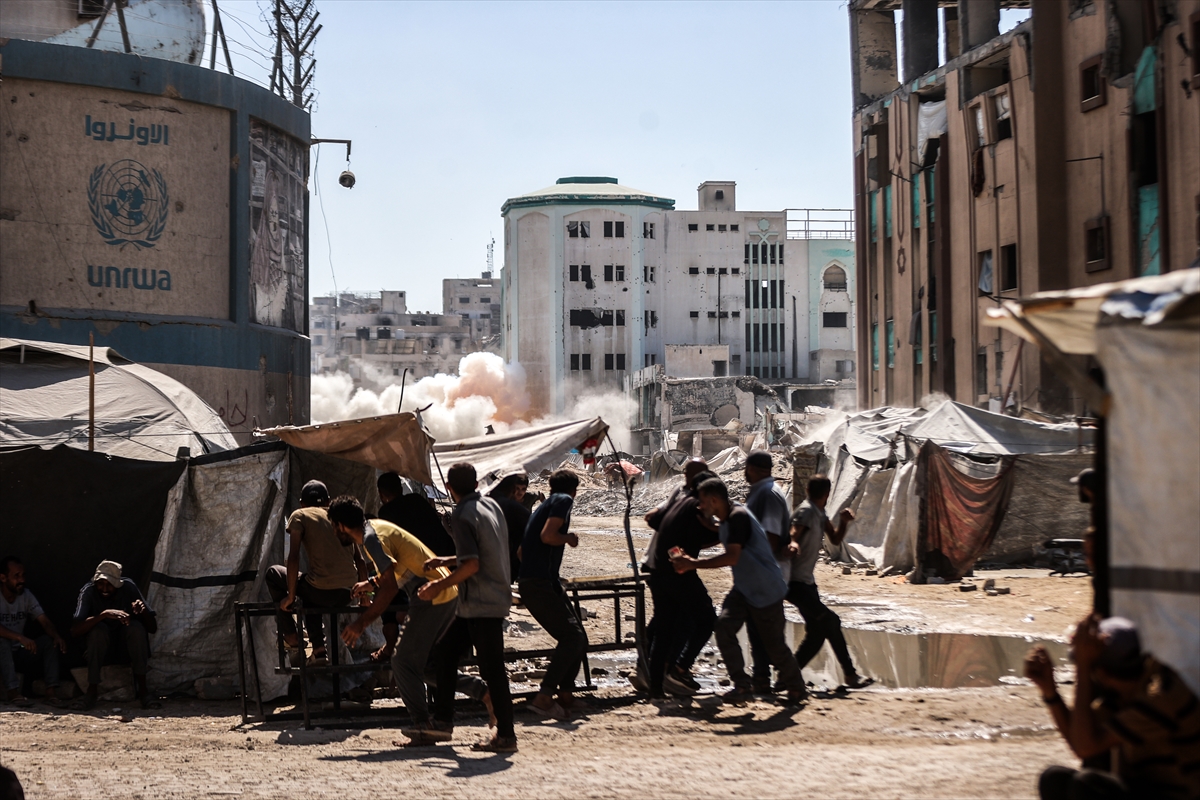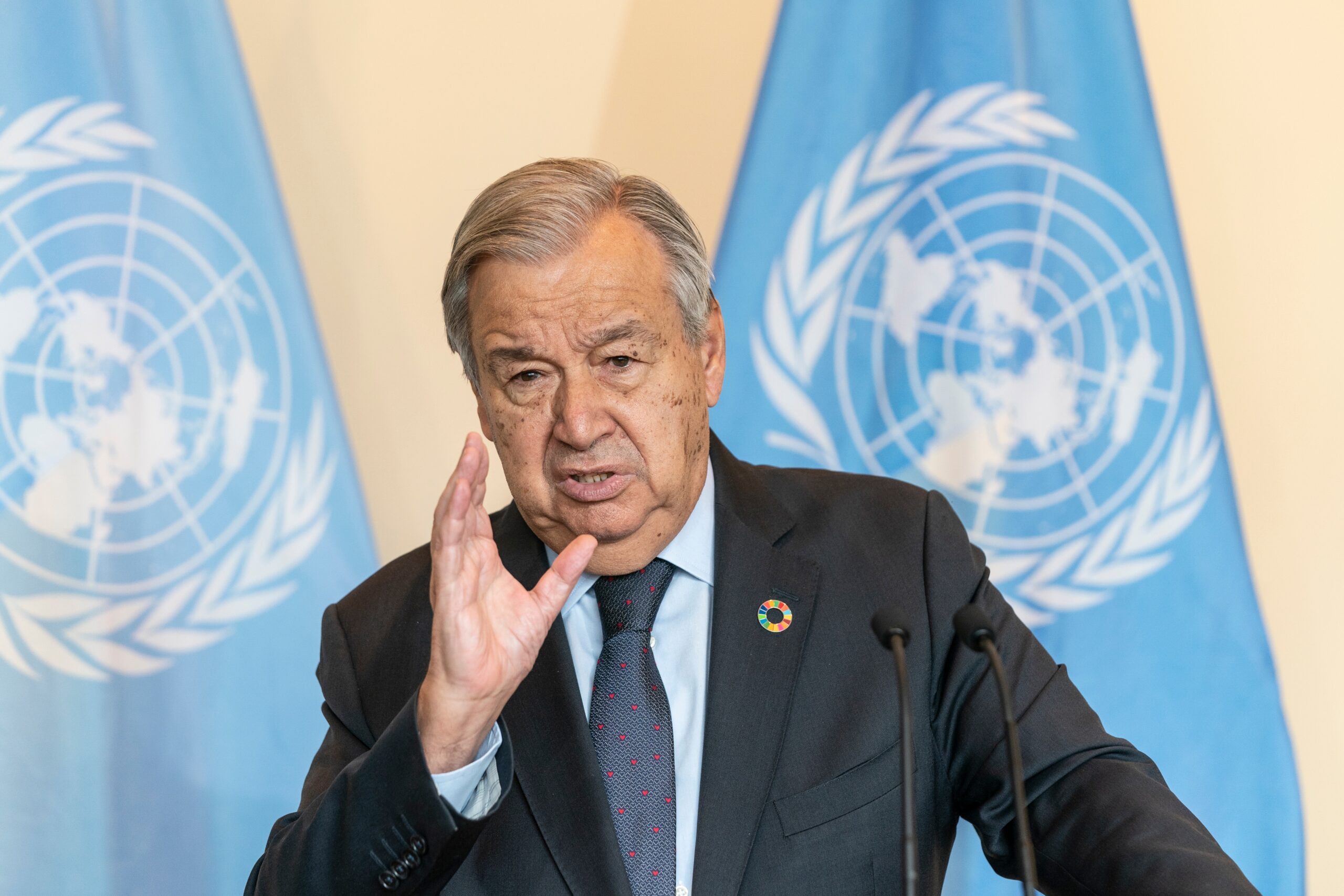
Hamas has accepted elements of U.S. President Donald Trump’s Gaza ceasefire proposal, including releasing hostages and transferring governance, while awaiting further clarification on other more difficult issues like disarmament.
Last night, the Palestinian movement confirmed it would release all Israeli captives, deliver the bodies of the deceased, and hand over administration of Gaza to an independent Palestinian technocratic body.
In its statement, Hamas said its decision followed “in-depth consultations” with its leadership, Palestinian factions, and mediators.
The group stressed that certain issues within the plan remain subject to a broader national consensus and must align with international law and resolutions. A Palestinian source told Anadolu that Hamas had formally delivered its reply to mediators and requested clarifications on several clauses.
Senior Hamas official Mousa Abu Marzouk later explained that the group had agreed to the plan “in principle.” He said Hamas “would hand over its weapons to a future Palestinian state” but underlined that the fate of Palestinians could not be decided by the movement alone.
Details of Trump’s plan
The proposal, presented at the White House with Israeli Prime Minister Benjamin Netanyahu present, outlines a multi-stage process. It requires Hamas to free all Israeli hostages within 72 hours of approval in exchange for the release of hundreds of Palestinian prisoners, including some serving lengthy or life sentences.
Subscribe to our newsletter and stay updated on the latest news and updates from around the Muslim world!

The plan calls for an immediate halt to fighting and for Gaza to become a weapons-free zone.
Armed factions in the territory would be disarmed, and Israel would gradually withdraw from the coastal enclave. Governance would then be handed to a technocratic Palestinian authority under the supervision of an international body led by the U.S. president.
It also envisions reconstruction for Gaza, while explicitly rejecting both the displacement of Palestinians and the annexation of the West Bank.
Trump said the initiative was designed not only to resolve the Gaza war but also to open the door to wider Middle East peace.
Trump’s reaction
Following Hamas’ response, Trump declared on his Truth Social platform that the group appeared “ready for a lasting peace.” He urged Israel to “immediately stop the bombing of Gaza, so that we can get the Hostages out safely and quickly.”
In a video message, the US president thanked Qatar, Türkiye, Saudi Arabia, Egypt, Jordan and others for their contributions to the talks. He described the moment as a “big day,” while acknowledging that final details still needed to be “written in concrete.”
He said all parties would be treated fairly and that unity among international actors had brought the conflict closer than ever to resolution.
Earlier, Trump had given Hamas until Sunday evening to accept the proposal, warning that if the group refused, “all HELL, like no one has ever seen before, will break out against Hamas.” After Hamas issued its statement, Israel said it was preparing to implement the first phase of the plan concerning hostages.
International reaction
Hamas’ response was welcomed internationally. UN Secretary-General Antonio Guterres urged all parties to “seize the opportunity to bring the tragic conflict in Gaza to an end.”
He reiterated calls for a permanent ceasefire, the unconditional release of hostages, and unrestricted humanitarian access.

Editorial credit: lev radin / Shutterstock.com
French President Emmanuel Macron called the announcement an opportunity to make “decisive progress towards peace,” pledging that France would support efforts at the UN and with partners.
British Prime Minister Keir Starmer described Hamas’ move as a “significant step forwards,” urging swift implementation.
German Chancellor Friedrich Merz labelled the response the “best chance for peace” in nearly two years, while Canadian Prime Minister Mark Carney expressed support for large-scale humanitarian aid delivery alongside peace talks.
Italian Prime Minister Giorgia Meloni reaffirmed her “full support” for Trump’s plan, and Australian Prime Minister Anthony Albanese welcomed the progress while stressing the importance of a two-state solution.
Indian Prime Minister Narendra Modi praised Trump’s “leadership” and pledged continued support for efforts towards a “durable and just peace.”
Regional powers also responded positively. Qatar, Jordan, and Egypt voiced hope that detailed negotiations would soon begin, while Türkiye said Hamas’ reply would pave the way for lasting peace. President Recep Tayyip Erdogan urged Israel to stop its attacks immediately, calling Hamas’ decision “a constructive and significant step.”
The next steps in Gaza
According to the plan, the first phase would involve a ceasefire, the release of Israeli captives, and Israel’s initial withdrawal from parts of Gaza. Mediators are expected to begin discussions on the details of prisoner exchanges and Gaza’s reconstruction.
An Egyptian source said preparations were underway for an inclusive Palestinian dialogue on Gaza’s future governance. The plan also envisages long-term monitoring by an international body to ensure compliance with ceasefire terms and disarmament provisions.

Despite these developments, Israel continued its bombardment of Gaza over the weekend, killing at least five Palestinians, including a young girl, in strikes on Gaza City and Nuseirat refugee camp.
This has raised concerns about whether the truce can be implemented swiftly enough to halt civilian casualties.
Since October 2023, Israeli bombardments have killed more than 66,300 Palestinians, most of them women and children.
Rights groups warn the enclave is on the brink of becoming uninhabitable, with famine, disease, and mass displacement worsening conditions for its 2.4 million residents.
International leaders have urged urgency in translating commitments into action, while mediators prepare for the complex negotiations that lie ahead.
For Gaza’s population, the immediate priority remains the cessation of bombardment, humanitarian access, and the possibility of reconstruction after unprecedented destruction






















